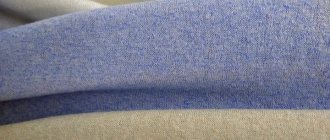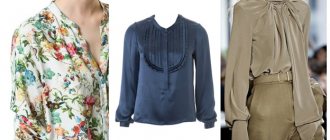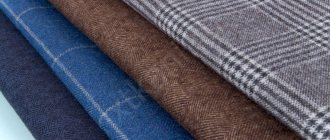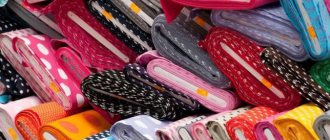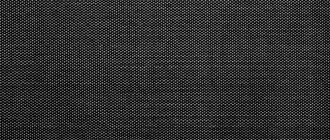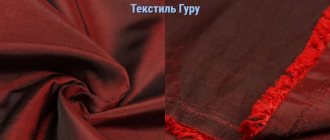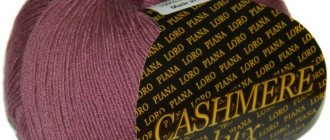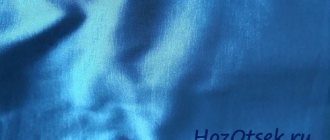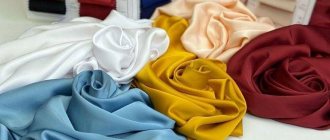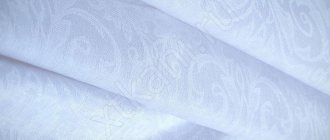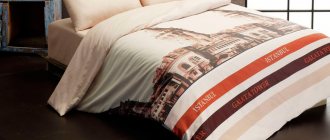Dense patterned fabric is found in interior products. Restaurants and cafes use tablecloths and napkins made from this textile. What is crane fabric, and what its properties and characteristics are, is useful for every housewife to know. The material was created in the mid-twentieth century, but modern design solutions have ensured its popularity. The main advantages of the fabric are beauty and practicality.
Characteristics and description
Crane fabric is a mixed material that combines practicality, durability and beauty. The textile is smooth, soft, elastic, pleasant to the touch. At the finishing stage, the canvas is impregnated with a special compound that provides protection against stains.
The material owes its appearance to Belarusian technologists. The crane first appeared in the assortment in the 50s of the last century. And it quickly gained popularity. Catering enterprises began to use tablecloths made from it in their dining rooms.
The properties and characteristics of the material are presented in the table:
| Properties | Indicators |
| Purpose | Table textiles |
| Fabric structure | Synthetic fibers with the addition of natural raw materials. In the classic version - 88% polyester and 12% cotton |
| Density, g/sq. m. | 192 |
| Weaving method | Satin or jacquard depending on design |
| Water resistance | Average |
| Wear resistance | High |
| Hygroscopicity,% | 1 – 5 |
| Peelability | Absent |
| Electrification | High |
| Standard width, cm. | 155 |
| Color palette | Varied: plain-dyed and printed fabrics in rich colors |
| Color fastness | Burns out with prolonged exposure to the sun |
| Manufacturer | Russia, Belarus |
Thin, durable fabric has dimensional stability, does not shrink, and does not fade. Special treatment of the fabric allows it to repel dirt and water. Easy to clean, easy to maintain.
The crane does not wrinkle, does not slip, and drapes. The fibers and chemicals used in production are safe for health. In the absence of direct exposure to UV rays, it demonstrates color fastness.
Crane, width 155cm
Fabric for table linen Zhuravinka is one of the most popular fabrics produced by Mogotex OJSC. It has proven itself well on the market for many years and is loved by cafe and restaurant workers, designers and banquet planners, as well as hospitable hostesses. The fabrics have certificates of conformity of the Republic of Belarus and the Russian Federation, and were also awarded an award for achievements in the field of quality. The manufacturer himself calls Zhuravinka “a classic fabric for table linen.” High performance qualities, a wide range of colors and a variety of weaving patterns rightfully give Zhuravinka a leading position among fabrics with Teflon-type finishing.
03S5-KV “ZHURAVINKA-3” and 04S47-KV “ZHURAVINKA-6” are two articles with a width of 155 cm, and some slight difference in composition and density.
Zhuravinka-3 has a composition: cotton - 12%, polyester - 88%, characteristic weaving patterns - large-patterned jacquard 1472, 1927, 2304, 2324 Zhuravinka-6 has a composition: cotton - 14%, polyester - 86%. This item is characterized by combined patterns. This is a classic checkered pattern, often found in catering establishments, it is a standard “smooth finish” in a rich color palette, and a small pattern, such as t.r. 4. The color design in both cases is plain, plain-colored. The GOM finish is dirt-water-oil-repellent. Densities may vary slightly depending on the batch. The minimum density is 194g. In some cases, the density specified by the manufacturer reaches 198g. Parameters such as composition and density are objective characteristics. The weaving pattern is a matter of preference. But color, flavor is a more complex characteristic. How to make a choice and not make a mistake?
The content department of the Belarusian Textile Center does everything possible to ensure that the colors of our fabrics on the screen correspond to reality. However, colors on your screen may vary depending on your color profile settings and monitor resolution.
Fabrics of the same color in the same article, having different weaving jacquard patterns, may differ slightly from each other due to varying degrees of shimmer and reflections from the weaving.
Fabrics of the same color but different articles differ in shade due to the difference in composition and density. You can’t rely only on the name of the color, for example, the photo below shows the difference in shades of “ivory” on the fabrics Zhuravinka, Richard and Mirella
And, of course, the determining factor is a person’s perception of color. In accordance with established standards, all leading fabric manufacturers have their own color scale. For table linen with a Teflon finish, the palette is wide and multifaceted. The color is indicated by a 6-digit number and has its own name, for example, 120503 “light lingonberry.” Naturally, under this name of color a person has his own color image - a berry, but the colors in nature are so diverse that each client understands the shades of this color in his own way, and Of course, it gives the fabric color characteristics that are actually different.
Depending on the lighting in which an object is located in the interior, its shade may be perceived differently by the human eye in different lighting conditions. Therefore, if you need to choose a tone that perfectly matches your needs, we recommend visiting our showroom and selecting fabric in natural light.
Advantages and disadvantages
The popularity of the material is due to the characteristics given in the description.
The following properties should be considered as the advantages of the crane:
- beautiful appearance;
- practicality;
- no shrinkage;
- softness;
- drapability and stability of shapes;
- hypoallergenic;
- wear resistance;
- ability to repel dirt;
- ease of cutting and sewing due to the non-slip surface;
- affordable price.
Among the minuses it is necessary to highlight:
- ability to accumulate static electricity;
- vulnerability of color to UV rays.
What kind of fabric is the crane?
Crane is a fabric with a mixed composition, most often it is used as a tablecloth. The material is produced in Belarus. One of the leading manufacturers, Mogotex OJSC, produces canvases in two articles. They differ from each other slightly in composition and types of pattern.
In textile catalogs, the crane is given the following description: dense, elastic fabric with a glossy surface with a matte jacquard pattern. A special feature of the material is Teflon impregnation. Thanks to it, stains do not form on the surface of the textile and it repels liquids.
Application - what can be sewn
Crane is widely used in decorating catering establishments and in the manufacture of home textiles. The fabrics are easy to cut and sew. The following products are made from textiles:
- tablecloths;
- napkins for serving items;
- buffet skirts for decorating tables;
- contrasting table runners;
- dish towels;
- covers for banquet chairs and decorative bows.
Composition and properties
The composition of the crane fabric is mixed: 12% cotton and 88% polyester. Fabrics containing 14% cotton and 86% polyester are also produced.
A large number of synthetic fibers in the composition determines the main characteristics of the fabric. Thanks to polyester, it is durable and abrasion-resistant. At the same time, the material is elastic, does not slip on the tabletop, and does not form unnecessary folds. Textiles are produced with a density of 194 – 208 g/m2. The standard width of crane fabric cuts is 155 centimeters.
To give the fabric water-repellent properties, dirt and grease resistance, it is treated with special impregnations. Most often, crane tablecloths and napkins have a Teflon coating.
Crane fabric is available in a wide range of colors: white, burgundy, blue, beige, green, coffee. A crane tablecloth can be blue, peach, or black. There are more than 50 color options in total.
The material is produced using a jacquard weave or a combination of satin and satin, which gives a wide choice of weaving patterns. These include large jacquard patterns (floral, fantasy) and small matte patterns on the glossy surface of the canvas. They produce crane fabric in a checkered pattern or with a satin stitch pattern.
Care instructions
Crane is an easy-to-care fabric. If you follow the rules, a product made from it will last for decades.
Table linens should be washed separately from other items. It is recommended to use mild detergents. The water temperature should not exceed 40 degrees. Do not use chlorine bleaches.
Spinning is performed at medium drum speeds. Dry flat, protected from direct sunlight. Do not allow it to dry out.
Iron the product from the wrong side without steam. The temperature of the iron sole should be 130 – 150 degrees.
Due to their dirt-repellent properties, table textiles rarely need dry cleaning. If necessary, it is not prohibited.
Care
The crane is easy to care for, you just need to adhere to a certain ironing and washing regimen, in order for it to last longer in the dining room, you must adhere to some restrictions:
- avoid contact with the fabric surface of chlorine or substances in which it may be present as an additional component;
- It is better to use dry cleaning more often if it leaves the fabric clean than to constantly wash it;
- Do not use bleaches to restore the purity of the material;
- wash only at temperatures up to 40 degrees;
- when ironing Zhuravinka products, you should adhere to the optimal temperature;
- To dry it faster, you can use a special machine mode, just set the minimum speed.
But this information will help you understand what a round tablecloth on a kitchen table might look like and what parameters you should use to choose it.
Application area
Crane is one of the most popular fabrics for table linen. The material is used for table setting in cafes and restaurants. Crane tablecloths are complemented with napkins and napkins (spread over the tablecloth).
Due to the fact that the material does not slip, muletons - table covers - are also sewn from it. They prevent the tablecloth from rubbing on the table.
They sew chair covers and buffet skirts to decorate table legs from cranes. Decorative towels are made from it.
Crane textiles are suitable for special occasions and everyday use. Tablecloths and table sets for household purposes are sewn from fabric.
Advantages and disadvantages
The main advantage of the material is water and dirt resistance. Fresh stains are removed from the surface of the tablecloth in a matter of seconds. Restaurateurs and simple housewives highly value the fabric for:
- strength and wear resistance – table textiles last for many years even with frequent use;
- the material holds its shape well - does not stretch or deform during washing or during use;
- attractive appearance and color fastness - tablecloths do not fade, do not fade in the sun, and tolerate dry cleaning;
- pleasant tactile sensations - the protective impregnation is not felt on the surface of the textile. It is soft and gentle to the touch;
- the material does not absorb odors;
- easy care - the tablecloth is easy to clean at home.
The disadvantage of the material is easy burnability. Cigarette ash will leave a hole in the tablecloth in less than 15 seconds. The disadvantages include the need for periodic dry cleaning.

